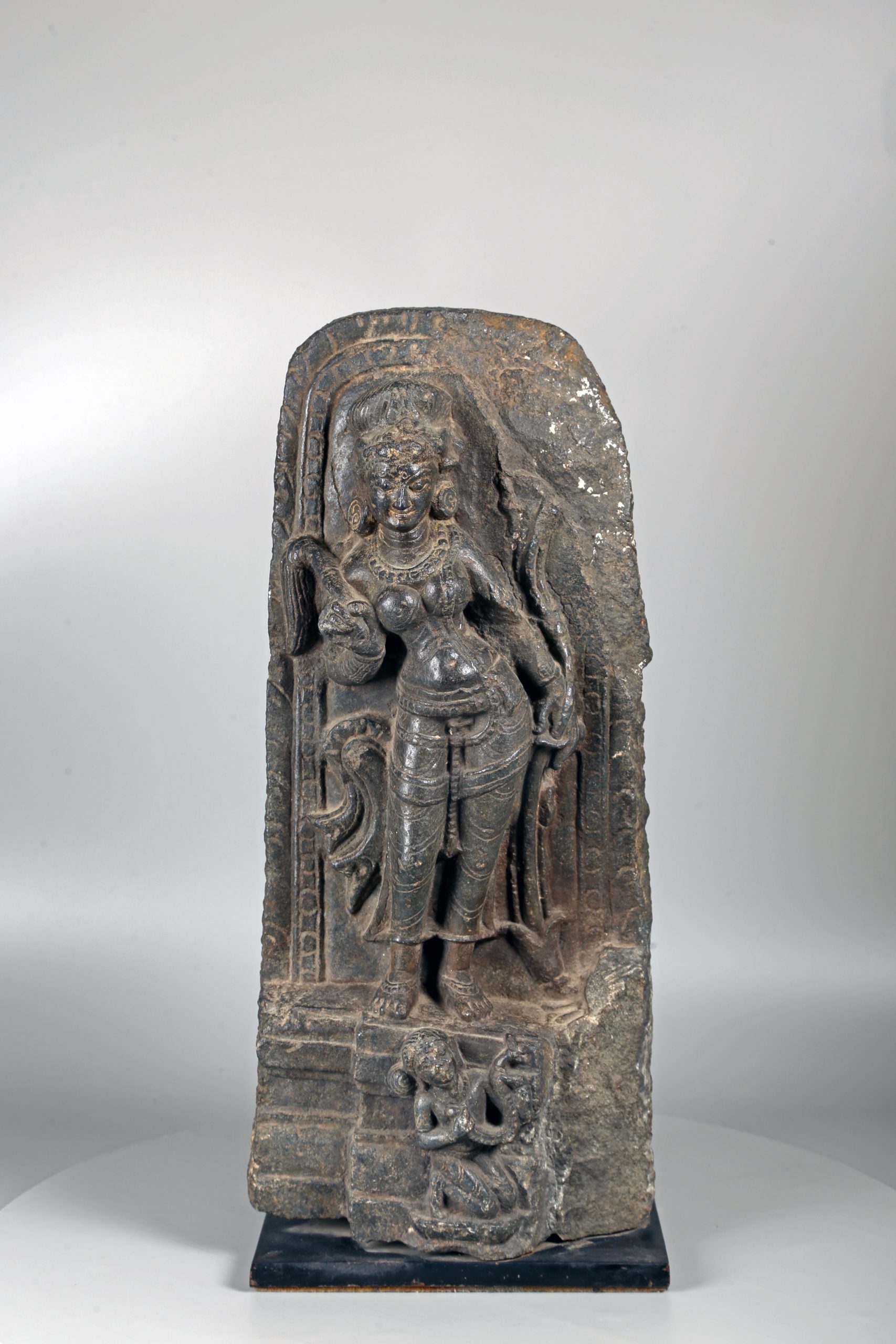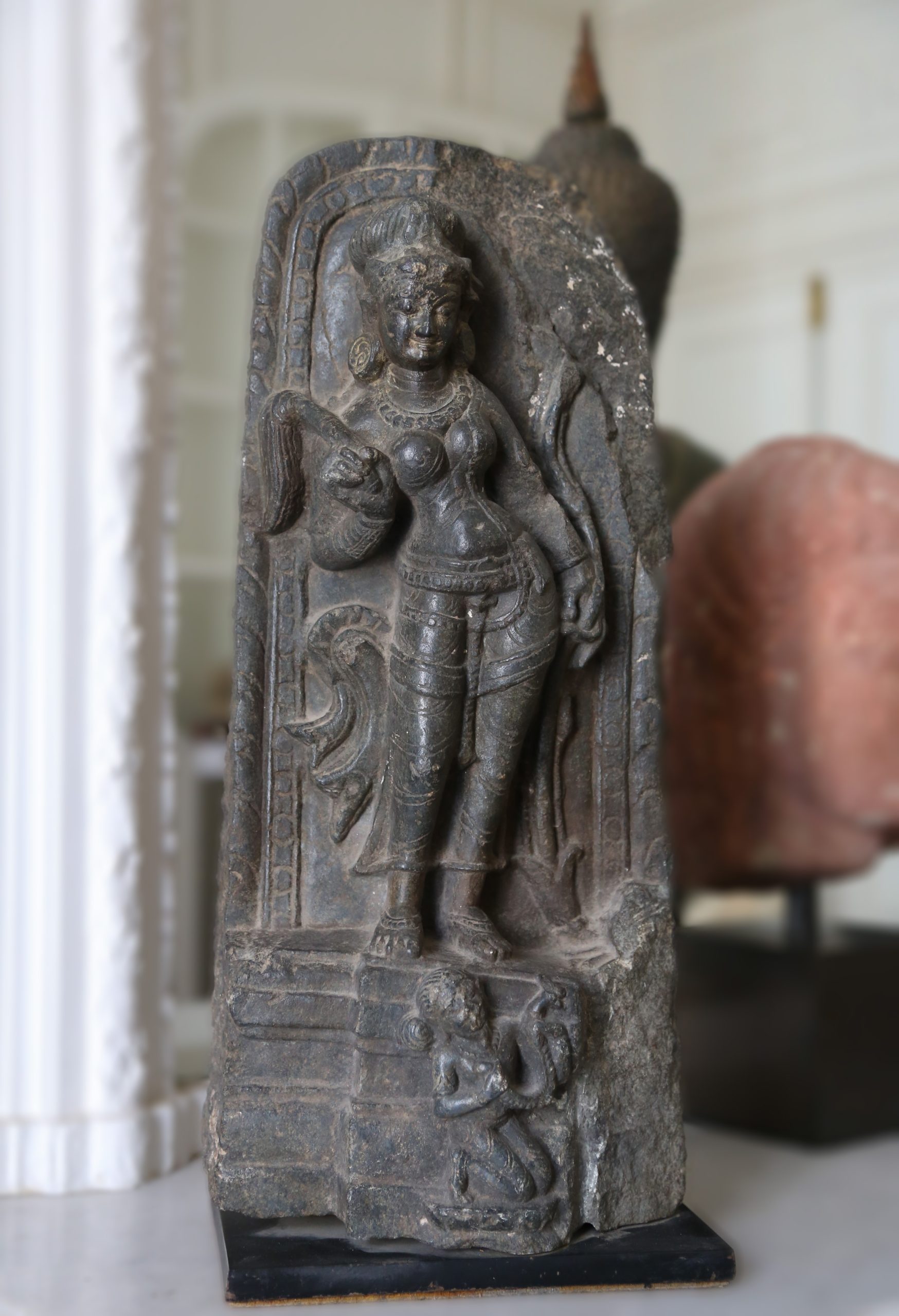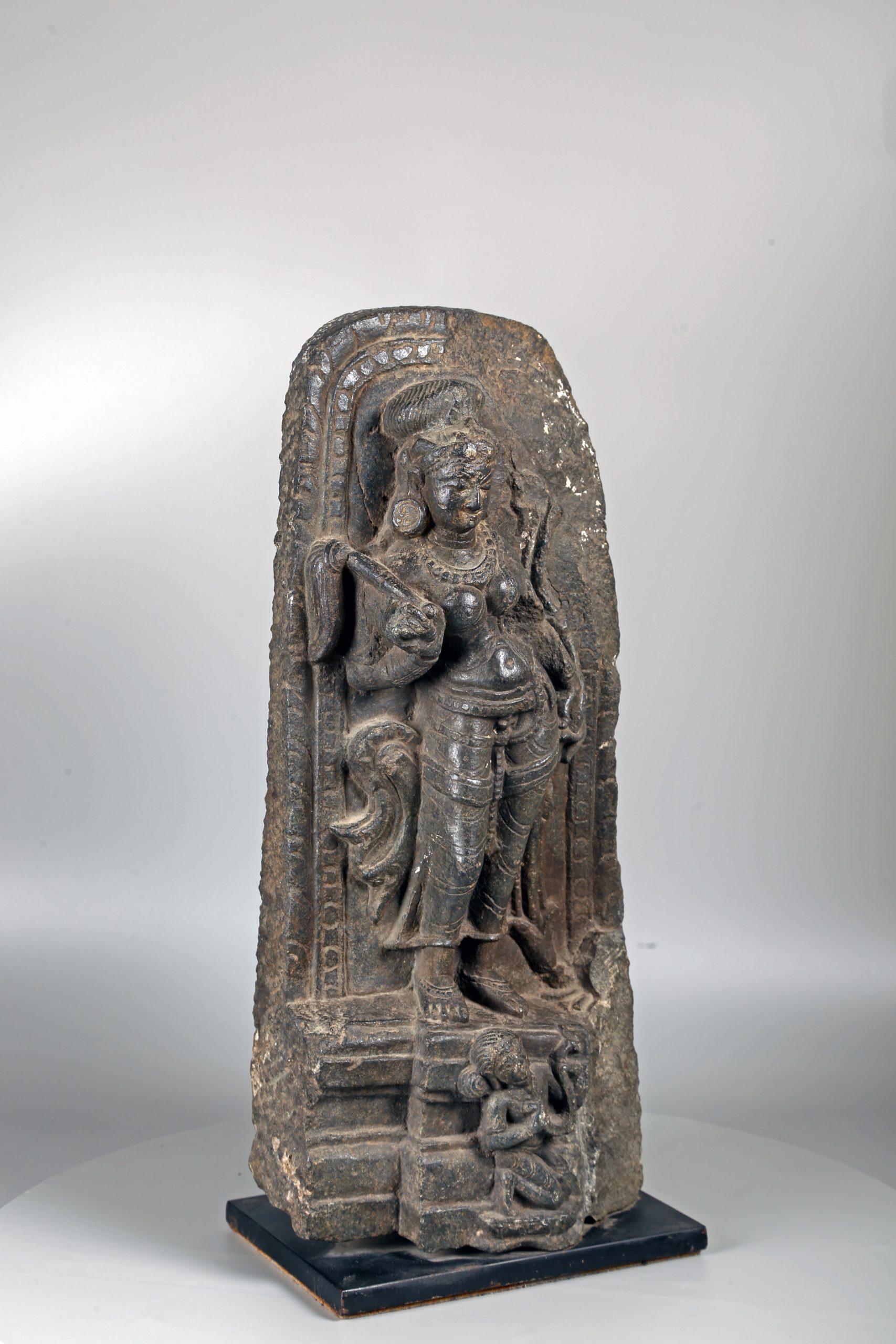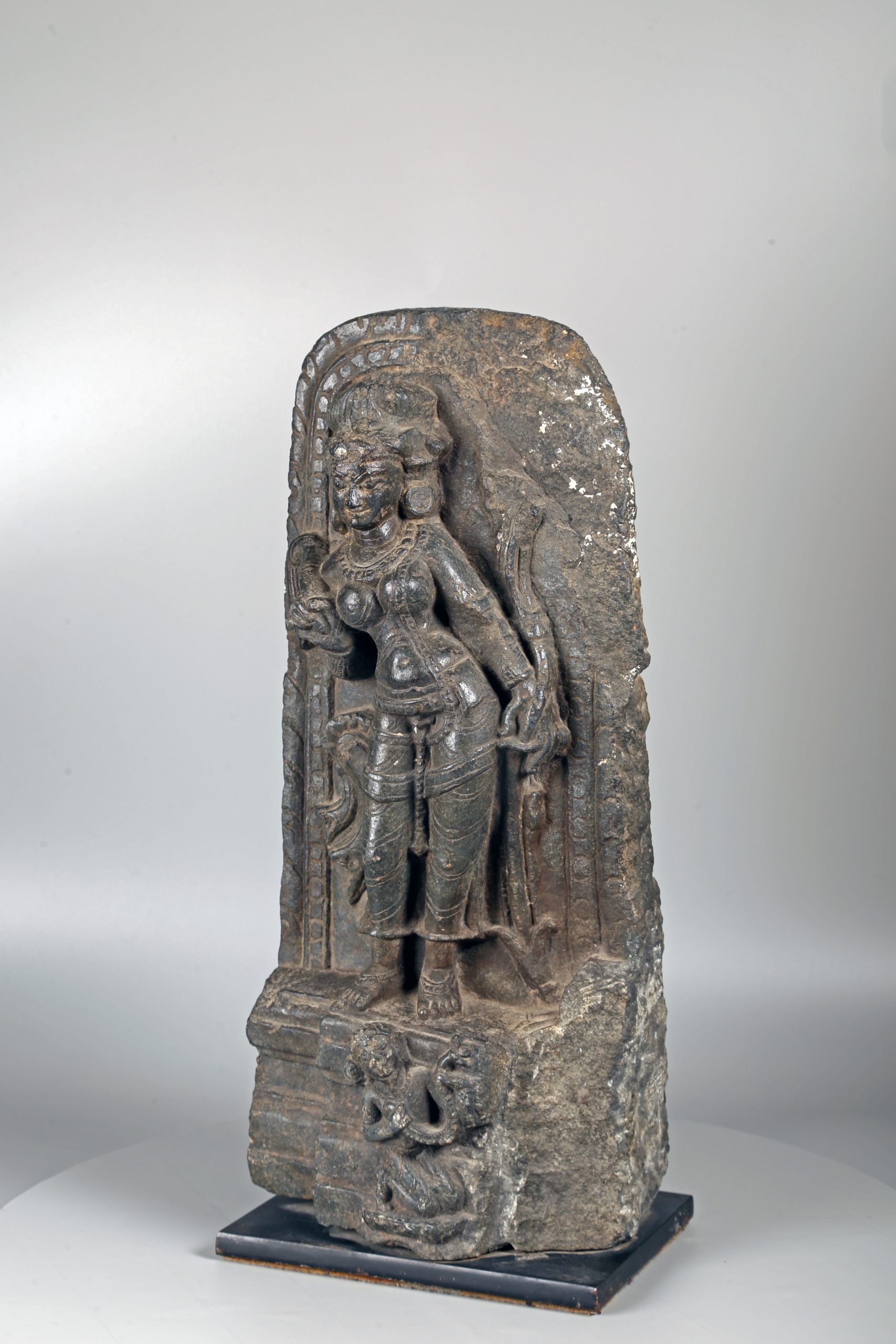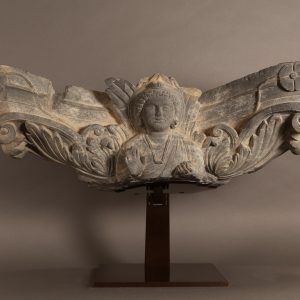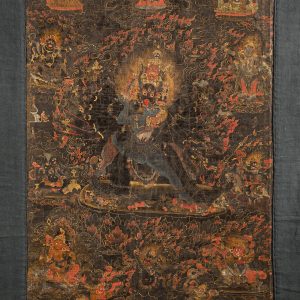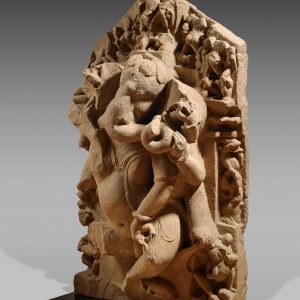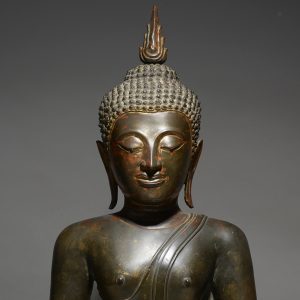Devī Stele
Black schist
Palā Sena period (8th – 12th century)
Bihār, Bengal
47 x 20.5 cm or 19 x 8 inch
360° View
Description
This beautiful dark stone stele represents a Devī, a goddess. Her luscious form is made all the more sensual by her marked hips, by which the goddess seems to stand out from the stele. She is dressed in a dhotī, and is wearing a high bun. The deity is richly adorned with various ornaments. She holds a flycatcher in her hand, which recalls the goddesses or prosperity and luck Lakṣmī, who is often represented with this attribute.
The stele, whose end is rounded, is decorated with two rows of pearls and stylised lotus petals, characteristic of Palā Sena stelae. The base, made up of two parts symmetrically set back from the central part, and the openwork cut-out allow this work to be dated to the 9th-10th century, as the top of the stele is rounded, the whole not openworked and not very busy. The softened, supple and rounded modelling, the treatment of the clothes and the ornaments allow this work to be linked to the artistic production of northeast India.
The cult of Devī becomes more important from the Palā Sena period onwards; it may be a form of Pārvatī, the wife of Śiva, or an epithet of the Great Goddess. From this period onwards, more and more female deities are represented. This mysterious Devī is an outstanding example.
Provenance : Philippe Dodier collection, Parisian private collection.

